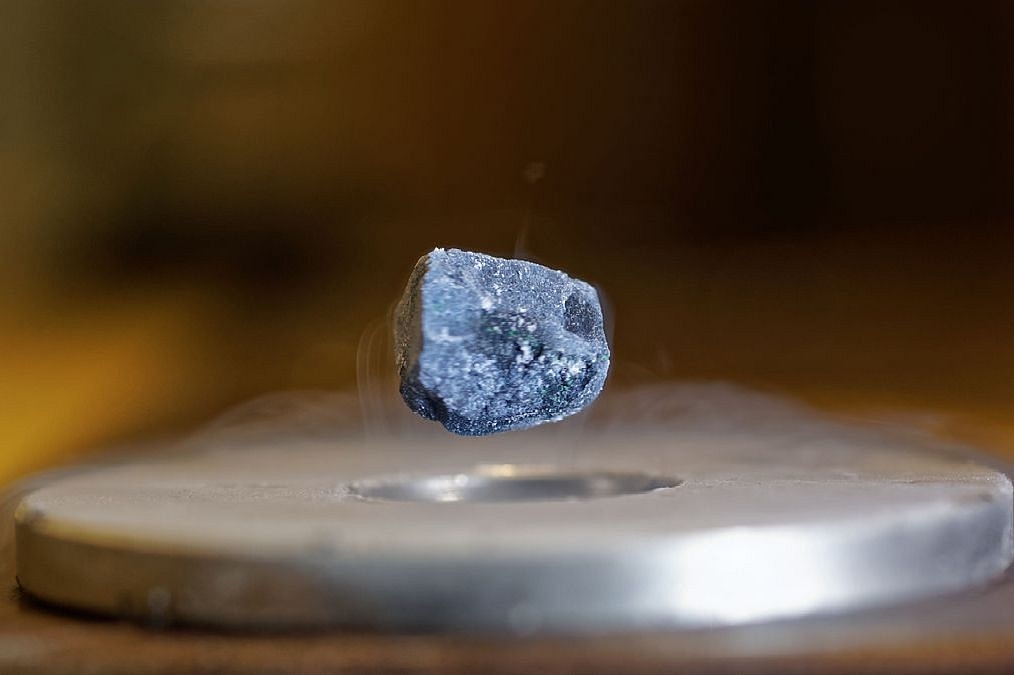Insta
Watch: IISc Researchers Share Video Evidence Of Superconductivity At Ambient Temperature And Pressure

High Temperature Superconductor Levitating Above A Magnet (Representative Image) (Julian Litzel/Wikimedia Commons)
Days after posting a revised article in arXiv, a pre-print repository, researchers from Indian Institute of Science (IISc), Bengaluru, shared a video that shows clear evidence of superconductivity at ambient temperature and pressure, reports The Hindu.
In the video, nanoparticles made of gold-silver mixture (grey/black grains inside the tube) can be seen getting repelled and even levitating when brought close to a permanent magnet at different angles, showing strong diamagnetism, a property of the superconductors.
Diamagnetism is one of the important properties of a superconductor. “When a magnetic field is applied from outside, then the superconductor expels magnetic field and never allows magnetic field to go through it. This is used for levitation of a superconductor,” explained Arindam Ghosh, IISc Professor and co-author of the paper.
“We were able to achieve diamagnetism at ambient temperature and pressure,” he added.
“New video uploaded on diamagnetism at ambient conditions in the newly claimed superconductor. First evidence of magnetic levitation and Meissner effect at room temperature? More updates soon,” Professor Ghosh tweeted on 27 May.
Superconductivity at room temperature has been one of the most sought out problems in physics for almost a century. A material is termed as superconductor if the passage of electricity faces close to nil resistance. Such resistance is responsible for losses while transmission, practically limiting the distances to which electricity can be supplied from a source.
Earlier, Professor Anshu Pandey and team had claimed that their material exhibits major properties of superconductivity at ambient temperature and pressure. The material is in the form of nanosized films and pellets made of silver nanoparticles embedded in a gold matrix. Both metals do not exhibit superconductivity independently.
Introducing ElectionsHQ + 50 Ground Reports Project
The 2024 elections might seem easy to guess, but there are some important questions that shouldn't be missed.
Do freebies still sway voters? Do people prioritise infrastructure when voting? How will Punjab vote?
The answers to these questions provide great insights into where we, as a country, are headed in the years to come.
Swarajya is starting a project with an aim to do 50 solid ground stories and a smart commentary service on WhatsApp, a one-of-a-kind. We'd love your support during this election season.
Click below to contribute.
Latest